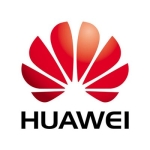What is our primary use case?
The features that we're currently using are mainly just for the endpoint protection, which is for the service and the workstations. We basically use it for the servers, the main servers, and then from there for the client, which is basically the laptops and the PCs.
How has it helped my organization?
The fact that it's not heavy on the machines has really helped. It's basically lightweight. One advantage is that we, having a cloud solution, do not require a physical machine that we have to administer on our network.
What is most valuable?
The fact that it's on the cloud means we don't have to administer it on our network or deal with a physical machine, which saves us money.
The solution has many great features.
From the console, we can start different scannings on different machines. We enjoy the centralized reporting part of it.
The initial setup is simple.
We enjoy its general stability.
The solution can scale.
So far, the solution has been problem-free.
What needs improvement?
We don't need any extra features. We only use it for the servers and the workstations. We'd like to see them offer their services on mobile devices like tablets. I'm not sure if that's an option or not.
For how long have I used the solution?
I've been using the solution for over a year now.
What do I think about the stability of the solution?
It's been very stable. In fact, we haven't had any complaints or any issues with it. There are no bugs or glitches. It doesn't crash or freeze. The performance is great.
What do I think about the scalability of the solution?
The scalability is quite good.
Right now, we have 40 users.
We will definitely scale in the future. As we get new employees, we just request additional licenses.
How are customer service and support?
I've never had any issues.
Which solution did I use previously and why did I switch?
How was the initial setup?
The implementation process was straightforward. What basically happens is that you just have to pick that certain client from the console and then you just install it on the machines. From there, of course, you handle connectivity after that. It's pretty straightforward.
A full deployment on one machine took less than 20 minutes. The thing is, if you have fast internet, it can even be much less.
Maintenance is very simple. Support is inbuilt from the manufacturer's side. Therefore, internally, if there are any issues on the client machine, you just reinstall it. There isn't much to do really, in terms of maintenance, except maybe the licenses. It's hosted on the cloud and updates are automatic, and are available from the portal.
What about the implementation team?
We did not need a reseller or consultant's assistance. It was all handled internally.
What was our ROI?
I haven't really explored ROI. I only have worked with it for slightly over a year. Maybe we need to start looking at it.
That said, so far, we are protected and we haven't been hit so far. We're getting the returns from it in that sense.
What's my experience with pricing, setup cost, and licensing?
Having a cloud option is a real cost saving.
In terms of licensing, we pay on yearly basis. From there, what happens, in the last month, we request a quotation for renewal, and then from there we just pay through the local reseller.
We're thinking of maybe dealing with the supplier, the manufacturer, directly, however, right now, we're still using the local supplier for licensing and payments.
What other advice do I have?
We are on the latest version of the solution.
We are customers.
I would rate the solution at a nine out of ten. We are very happy with it. I would recommend it to others.
I'd advise new users that, if they are going to go with the cloud option, that issues related to maintenance is actually handled within the cloud. The rollout is pretty smooth.
Which deployment model are you using for this solution?
Public Cloud
If public cloud, private cloud, or hybrid cloud, which cloud provider do you use?
Other
Disclosure: My company does not have a business relationship with this vendor other than being a customer.

















